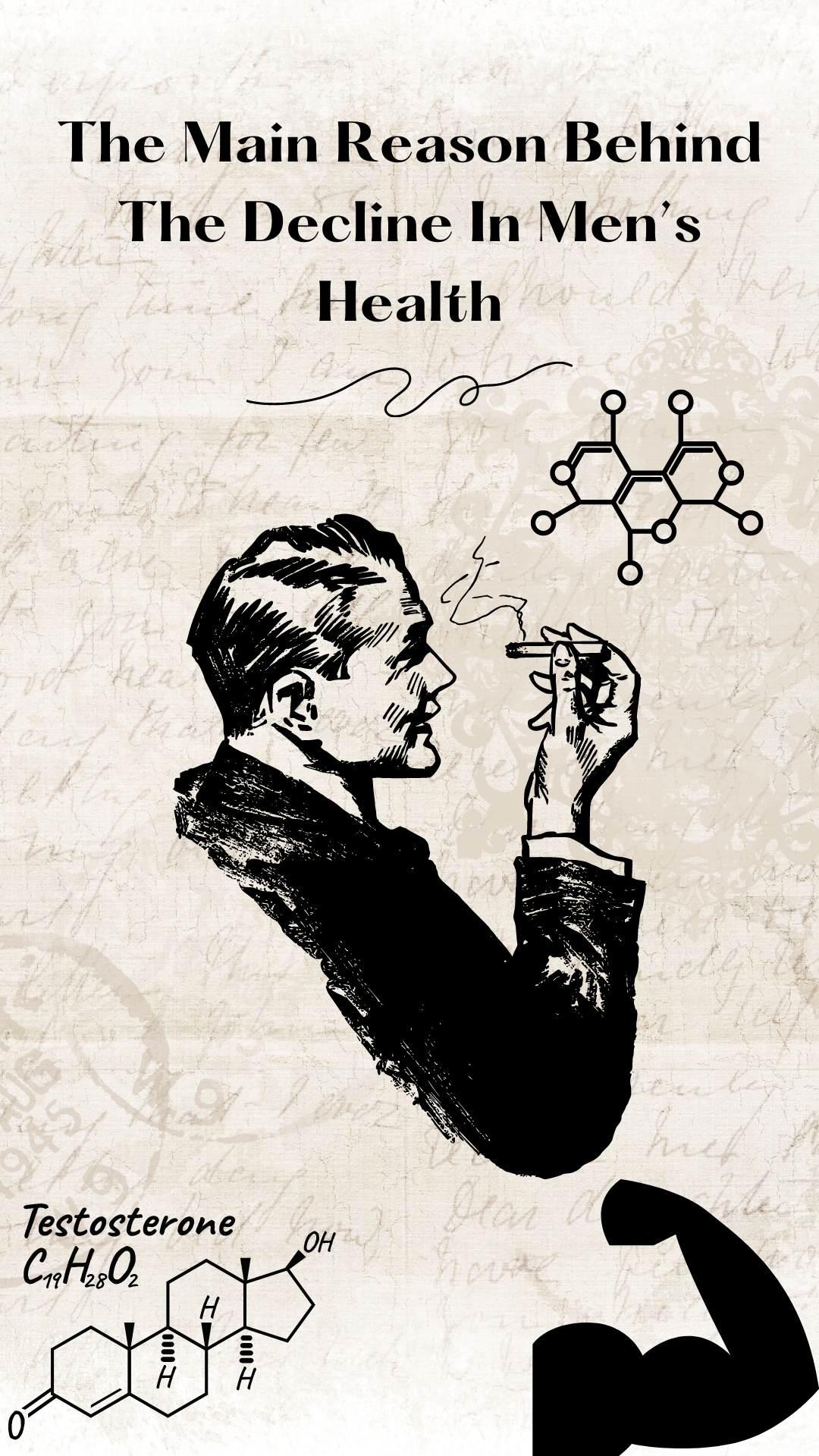
In recent years, there has been a growing concern about the physical strength and overall health of men. Many argue that men today are becoming weaker compared to previous generations. This blog post aims to explore this claim and examine the factors that may contribute to the perceived decline in male strength.
By analyzing various aspects such as lifestyle changes, societal expectations, and physiological factors, we can gain a better understanding of whether men are truly getting weaker or if there are other factors at play.

What’s The Problem Anyways?
Take any high school class photo of 1980 and compare it to a class photo taken in 2020; you can see the difference yourself, in 1980 you’ll see men, in 2020, you will see boys.

Researchers have found that the average male sperm count has plummeted by 50% since the 1970s. Erectile dysfunction, social anxiety, low confidence, fear of talking to women, obesity, low sperm count, difficulty building muscle, depression and lack of motivation.
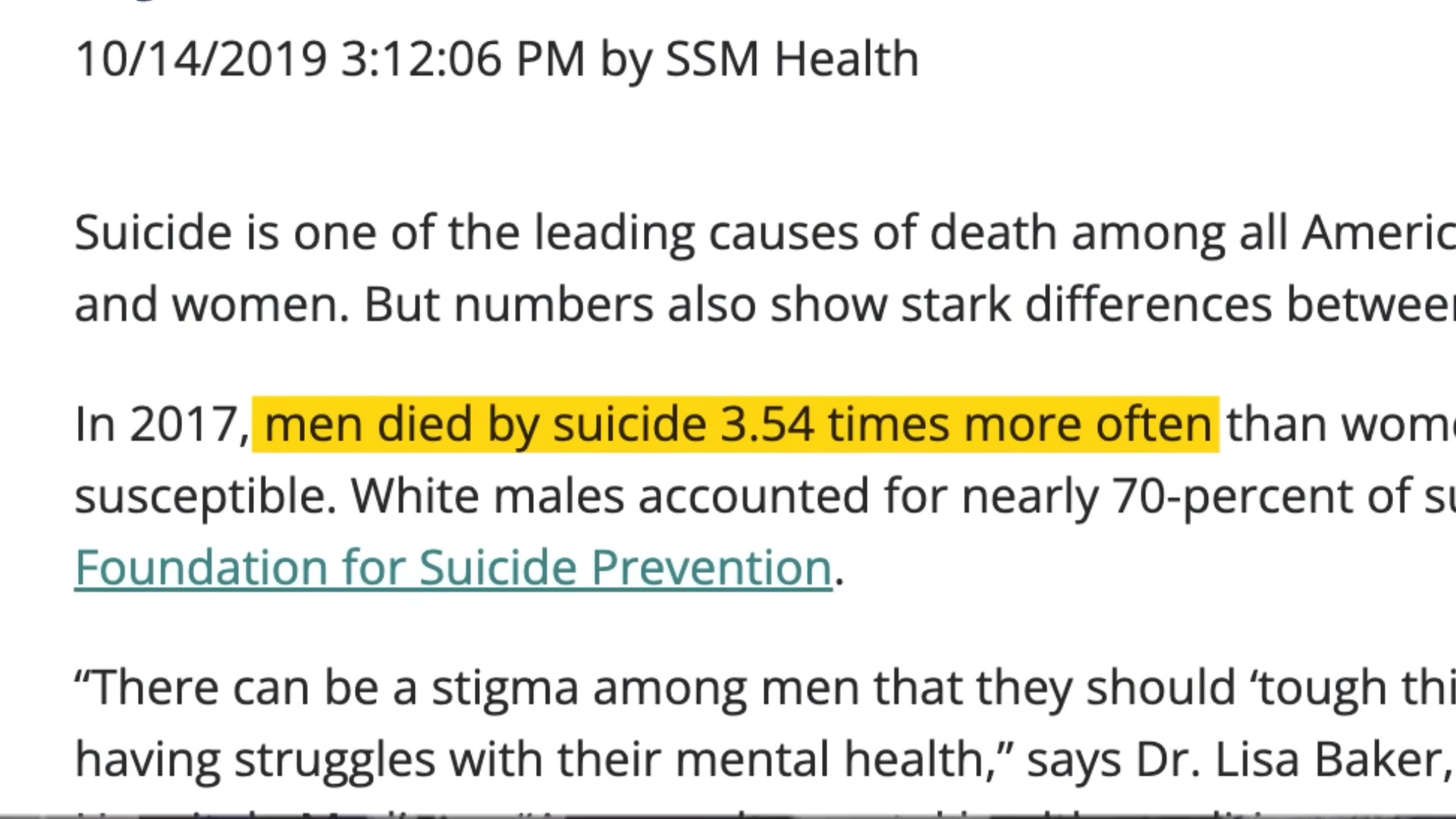
These are all problems modern men are facing more than any generation ever before; they are all associated with lower testosterone levels.
To take away a man’s testosterone is to take away everything that makes him a man and yet that is what modern society is systematically doing to you right now.
Moreover, it is not solely testosterone that is affected. From 1973 to 2011, there was a significant decline of 59% in male sperm count. We currently have less than half the sperm count compared to 50 years ago, and according to forecasts, sperm count will plummet to zero by 2045.
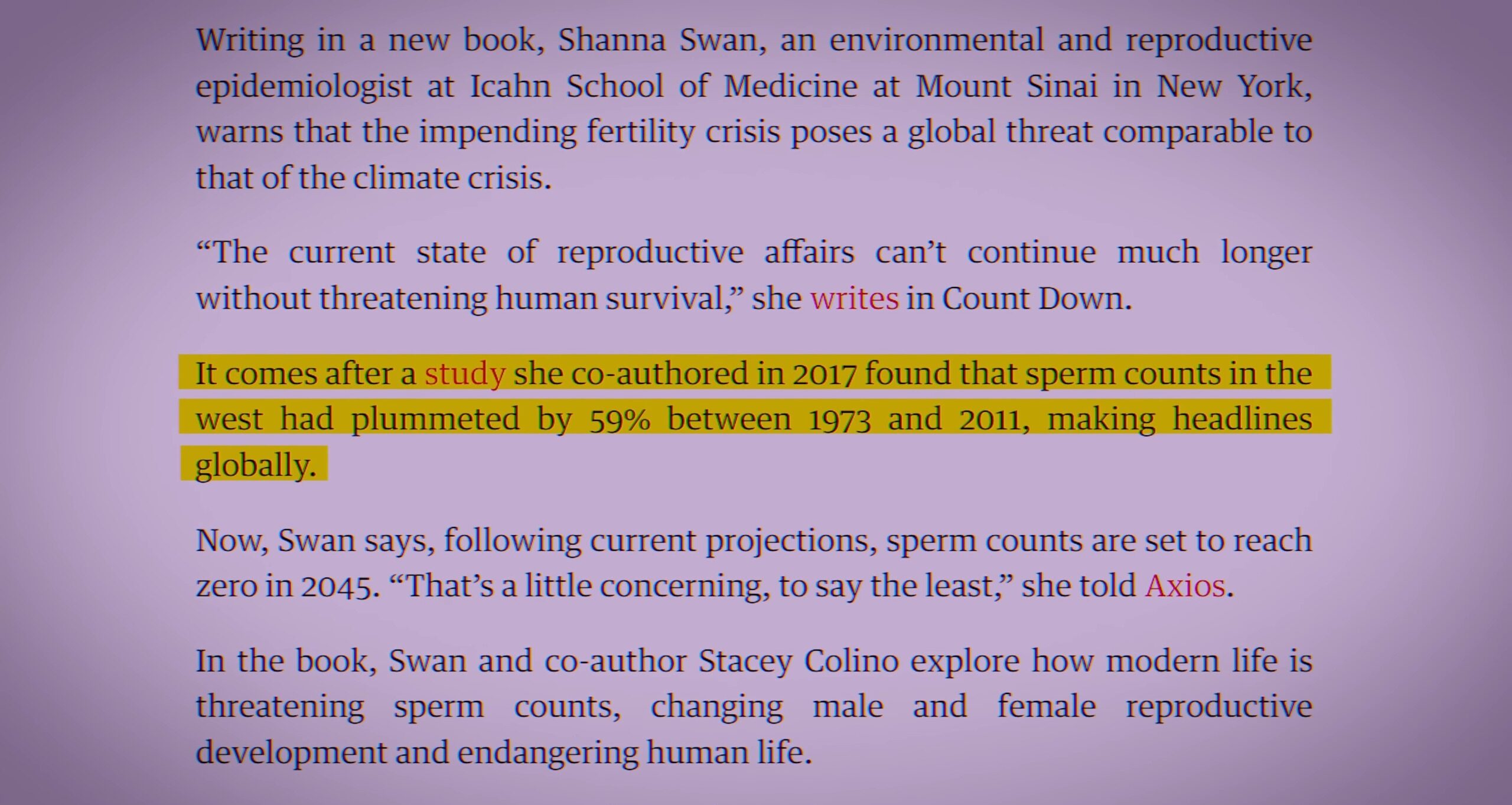
What’s Testosterone?
Testosterone is a hormone that is mainly produced in the testicles and is responsible for the development of male sexual characteristics. It plays a crucial role in various aspects of men’s health, including the development of muscle mass and strength, bone density, sperm production, and even mood regulation. Testosterone levels typically peak during adolescence and early adulthood and then gradually decline with age.
Testosterone is important for men because it has a significant impact on their overall well-being and quality of life. It helps maintain muscle mass and bone density, which are essential for physical strength and mobility. Testosterone also plays a role in regulating mood, energy levels, and cognitive function.
Low testosterone levels can lead to various health issues, such as decreased muscle mass, increased body fat, decreased libido, erectile dysfunction, and reduced sperm production. It can also contribute to mental health problems, including depression and fatigue.
The major mental effect of testosterone is it makes effort feel good
It’s worth noting that testosterone levels can be influenced by various factors, including lifestyle choices, such as sedentary behavior, poor diet, stress, and lack of sleep.
But in this article, we will dive into deeper factors that are negatively affecting the testosterone levels for men.
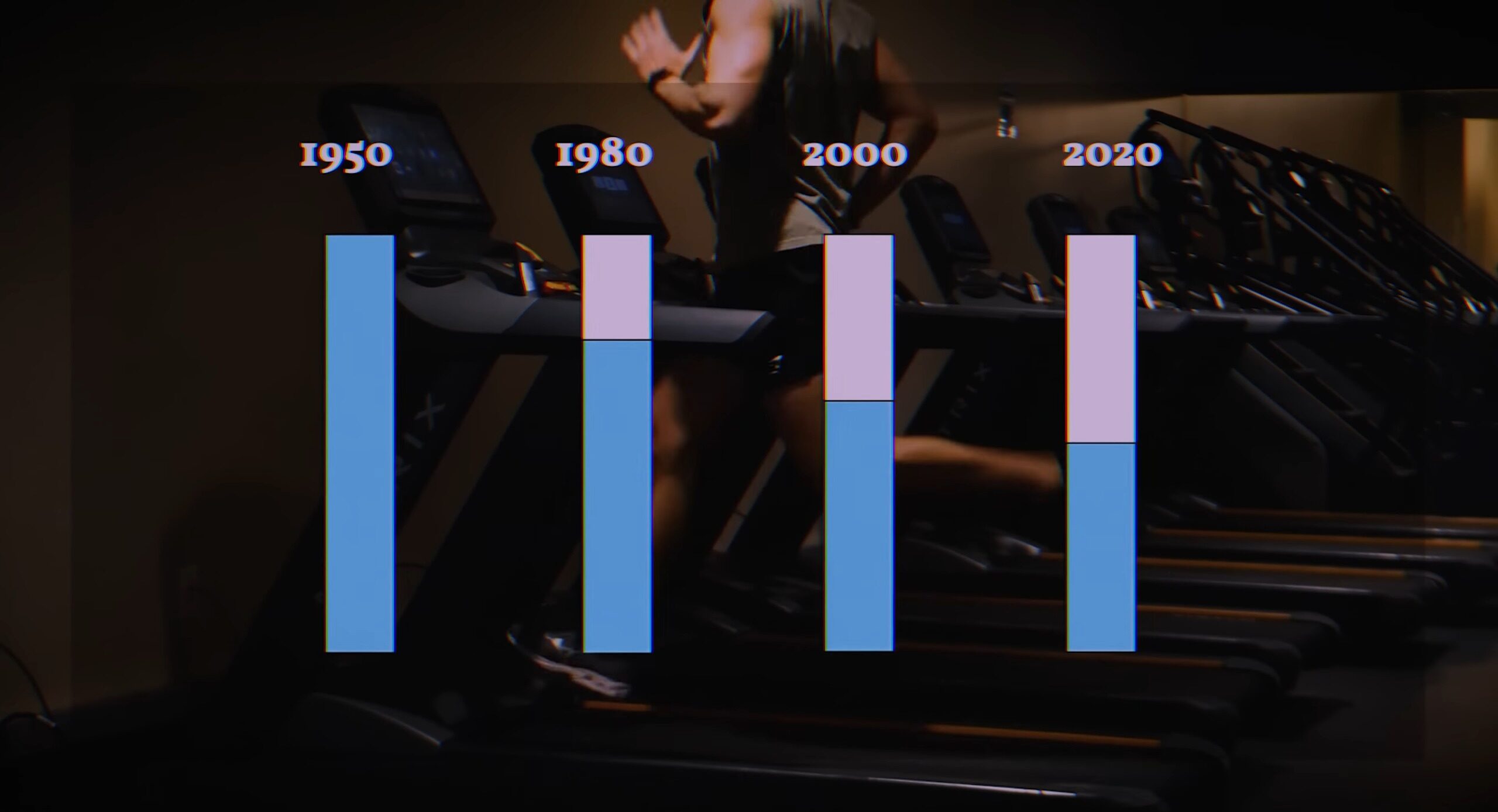
Drop in testosterone between 1950 and 2020
Factors Influencing Male Strength
Male Feminization
In his book, Anthony G. Jay explores the concept of male estrogenization and how it can potentially feminize men. He highlights the impact of estrogen-like compounds, known as estrogenic on male hormone balance.
Estrogenic chemicals can be found in various everyday products, such as plastics, personal care products, and even certain foods. These compounds can mimic the effects of estrogen in the body and disrupt the delicate balance of hormones, including testosterone.

One example of a scientific study that demonstrates the effects of estrogen on male fish is the research conducted by Canadian researchers. In this study, estrogen was added to the water where male fish were living. The researchers observed that the male fish started exhibiting female characteristics, such as the production of eggs. This study highlights the potential impact of estrogenic compounds on the hormonal balance and reproductive system of male organisms.

It’s important to note that while these studies provide valuable insights into the effects of estrogenic compounds, the direct translation of these findings to human males may not be straightforward. Human physiology and the effects of compounds can differ significantly from those of fish. However, they do shed light on the potential influence of estrogenic compounds on hormone balance in males.
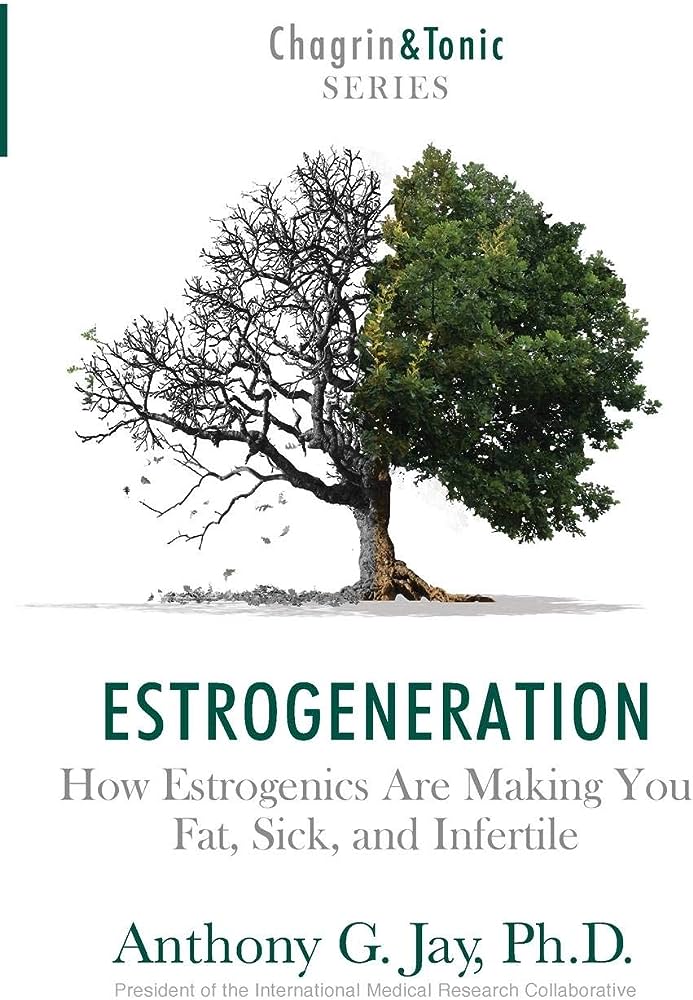
Soy Nation
Soy contains compounds called phytoestrogens, which are plant-based substances that mimic the effects of estrogen in the body. These phytoestrogens can bind to estrogen receptors and potentially impact hormone balance in both males and females.
Some research suggests that consuming soy products, which are rich in phytoestrogens, may have an estrogenic effect on the body.
While soy consumption has been associated with certain health benefits, such as reducing the risk of heart disease and improving bone health, there are concerns about its potential impact on hormone levels, particularly in men. Some studies have suggested that high levels of soy consumption may lead to decreased testosterone levels in men.

Estrogen is to females what testosterone is to males.
But when estrogen levels are too high in men, it can lead to infertility, low testosterone, slow growth, shrinking muscle mass and weight gain.
And soy happens to have estrogen than any other bean in existence.
1 cup of soybean has the equivalent amount of estrogen of 20,000 cups of chickpeas. Which makes soy the perfect food for farmers to fatten up their cows.

Water Supply
In addition to the potential impact of soy consumption, there are other environmental factors that can contribute to lower testosterone levels in men. The quality of the water supply is one such factor.
Many chemicals that are used in industry and agriculture can leach into water supplies, including endocrine-disrupting chemicals such as bisphenol A (BPA). Studies have shown that exposure to BPA and other endocrine-disrupting chemicals can disrupt the balance of hormones in males, leading to lower testosterone levels and other adverse health effects.

It was found that male fish that swim in water that contain low levels of artificial estrogens from birth control ended up developing feminine traits. These male fish literally started to produce eggs in their testicles, and these horrifying changes in their hormones were passed down through the generations.
And yes, this is the same water that you bathe in that comes in contact and gets absorbed by your skin. Not to mention the microplastics in your water, the lead in your water, waterborne bacteria and forever chemicals such as fluoride and more.
Alex Jones was once screaming: “I don’t want a bunch of chemicals in my water that turn the freaking frogs gay!”

The study he was referring to regarding frogs and atrazine was conducted by researchers at the University of California, Berkeley. The study explored the effects of atrazine, a commonly used herbicide, on the development of amphibians.
The researchers found that exposure to atrazine caused hormonal disruptions in frogs, leading to changes in their reproductive organs and behaviors. Specifically, they observed that male frogs exposed to atrazine exhibited feminized characteristics, such as reduced testosterone levels and the development of female reproductive tissues. This led to a decrease in their ability to reproduce successfully.

It is important to ensure that the water you consume is free from chemicals and contaminants that may disrupt hormone balance. While glass-bottled spring water is generally considered safe and can be a good choice, it is not the only option for maintaining normal testosterone levels.

Plastic water bottles, which are often used as a convenient and portable means of quenching our thirst, unfortunately contain a significant amount of Phthalates (which also mimics the effects of estrogen your body). These chemical compounds, commonly added to plastics to make them more flexible and durable, can be found leaching into the water we drink from these bottles. As a result, the consumption of water from plastic bottles contributes to our exposure to Phthalates, which have been linked to potential health hazards in numerous studies and pose a concern for our overall well-being. Therefore, it is crucial to be aware of the presence of Phthalates in plastic water bottles and to explore alternative options in order to minimize our exposure to these harmful substances.
Filtered water, such as water filtered through activated carbon or reverse osmosis, can also be a suitable choice. These filtration methods help remove impurities, including potential endocrine-disrupting chemicals, from the water.
It is important to note that water quality can vary depending on your location. If you have concerns about the quality of your tap water, you may consider using a water filter or contacting your local water supplier for more information.
In summary, while glass-bottled spring water can be a safe choice, there are other options such as filtered water that can also help maintain normal testosterone levels. It is important to consider the water source and quality to minimize exposure to potential hormone-disrupting chemicals.

Lifestyle Changes
The rise of consumerism and a materialistic and capitalist society has had significant effects on the human psyche, particularly among males. An influx of advertisements and marketing campaigns have been created to target male testosterone and masculinity, pushing individuals towards purchasing the latest and greatest products in order to showcase their status. This results in a culture of instant gratification, where the pursuit of material goods is seen as a way to validate oneself. However, this culture has also led to negative health effects such as obesity, as many individuals seek comfort in food or drink as a means of coping with the pressures of consumerism.
These lifestyle changes can indeed have a negative impact on modern men’s testosterone levels. Here’s how each of these factors can affect testosterone levels:
1. Sedentary jobs and decreased physical activity: A sedentary lifestyle and lack of exercise can lead to lower testosterone levels. Regular physical activity helps to stimulate the production of testosterone in the body. When men engage in less physical activity, their testosterone production may decrease.

2. Poor dietary habits and lack of proper nutrition: A diet lacking in essential nutrients can contribute to lower testosterone levels. Certain nutrients such as zinc, vitamin D, and magnesium are crucial for testosterone production. If a man’s diet is deficient in these nutrients, it can negatively impact his testosterone levels.

3. Increased stress levels: Chronic stress can disrupt hormone balance in the body, including testosterone. When the body is under stress, it releases cortisol, a hormone that can inhibit testosterone production. High levels of cortisol can lead to lower testosterone levels over time.

4. Lack of sleep: Sleep deprivation can also have a negative impact on testosterone levels. Testosterone production occurs primarily during sleep, especially during REM sleep. When men consistently experience inadequate sleep, it can lead to lower testosterone levels.

Societal Expectations
In our rapidly evolving society, we are witnessing a significant shift in traditional gender roles and the expectations that accompany them. Over the past few decades, the boundaries and limitations that once defined the roles assigned to men and women have become increasingly blurred. With the advancements in education, technology, and equal opportunity, individuals are now afforded the freedom to challenge and redefine these societal norms. This ongoing transformation has paved the way for greater inclusivity and a more diverse understanding of gender identity and expression. As a result, the concept of masculinity and femininity is no longer confined to rigid stereotypes, but rather seen as fluid and malleable constructs that can vary from person to person. This paradigm shift has opened up a world of possibilities, allowing individuals to pursue their passions and interests regardless of societal expectations based solely on their gender. As we continue to navigate these changing gender roles and expectations, it is important to foster an environment of acceptance, understanding, and respect for all individuals, regardless of how they choose to identify and express themselves.

In recent years, it has become increasingly evident that society’s gender roles and expectations have undergone a significant transformation. As a result, men now find themselves grappling with the mounting pressure to conform to a particular set of body standards that are not only unattainable but also impose unrealistic and arbitrary ideals upon them. This cultural shift has fostered an environment where men are expected to possess an impeccably chiseled physique, a prominent jawline, muscular arms, and six-pack abs. However, it is essential to recognize that these expectations often disregard the individual’s unique genetic makeup, overall health, and personal circumstances, ultimately contributing to detrimental consequences on men’s mental, emotional, and physical well-being. This evolving landscape necessitates a thoughtful examination of the outdated and harmful notions surrounding masculinity and body image, as well as the need to challenge and redefine societal expectations to foster a healthier and more inclusive environment for all individuals.
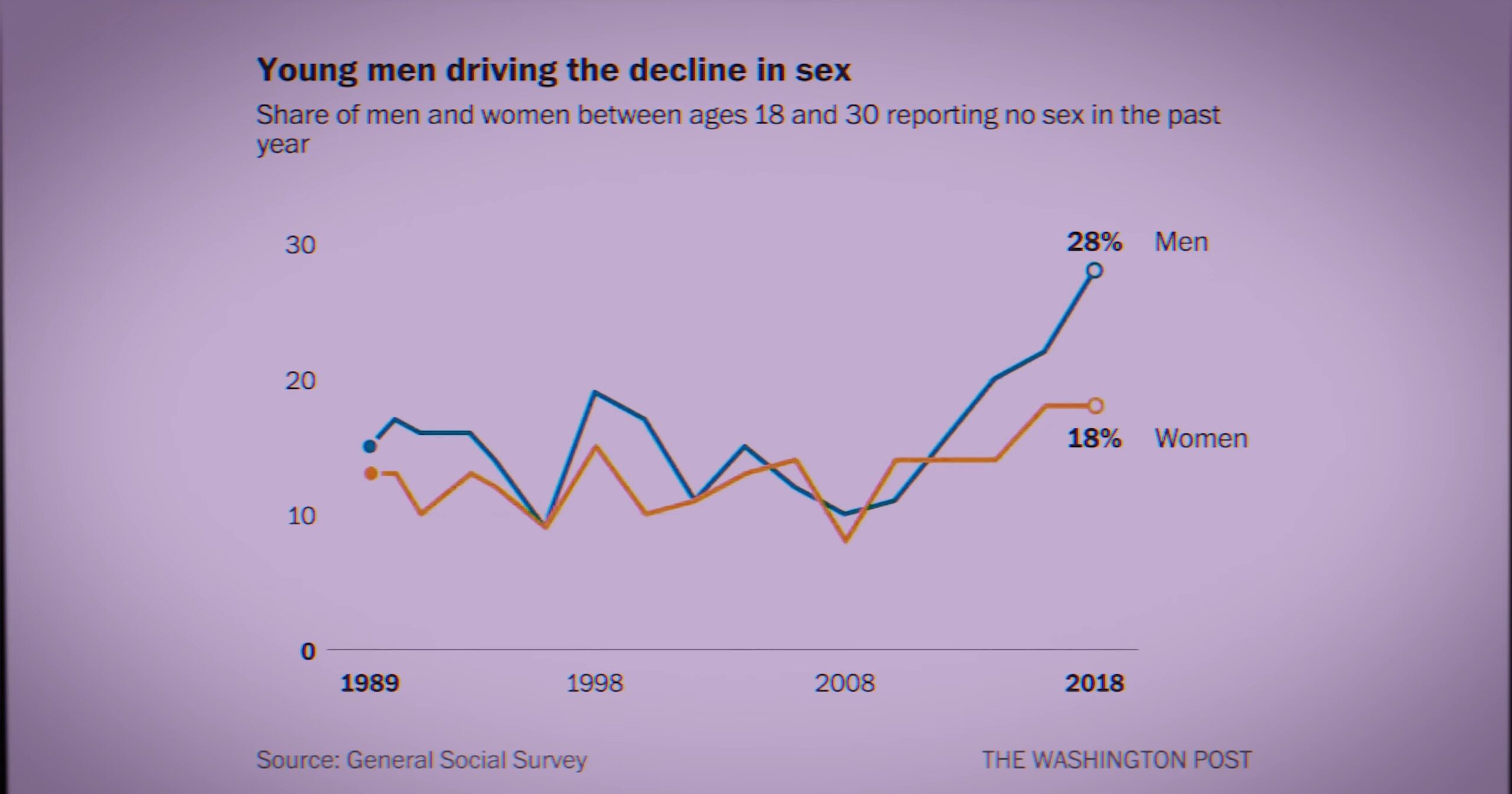
In addition to the aforementioned challenges, it is important to acknowledge that mental health issues continue to be subject to persistent stigmatization, especially when it pertains to men’s mental health. This pervasive societal stigma surrounding mental health creates an atmosphere where men may find it arduous to reach out for the assistance they desperately require. Consequently, the prevailing negative perceptions and societal pressures hinder their ability to openly express their feelings and seek support during times of need.
At a societal level, it’s being thrown down men’s throats; like in high-fashion how women’s dresses are becoming acceptable for men; toxic masculinity is what men hear when being a man in any sort of capacity was just considered as a negative. It’s simple if you think about it, if you condition a man to believe that it’s bad to act like a man, it’s going to have an impact when you constantly toxic shame men and tell that the way they are acting is toxic, eventually, you will wear them down.
You can look at how most famous male celebrities dress nowadays and this tend to have an impact on the younger generation of men.
Not to act like a conspiracy theorist but if you think about it for yourself, a population of weak men is easier to control, what’s happening on a societal level is not a coincidence, it’s on purpose. If you can feminize a whole population, any chance of revolt or uprising slim to none.
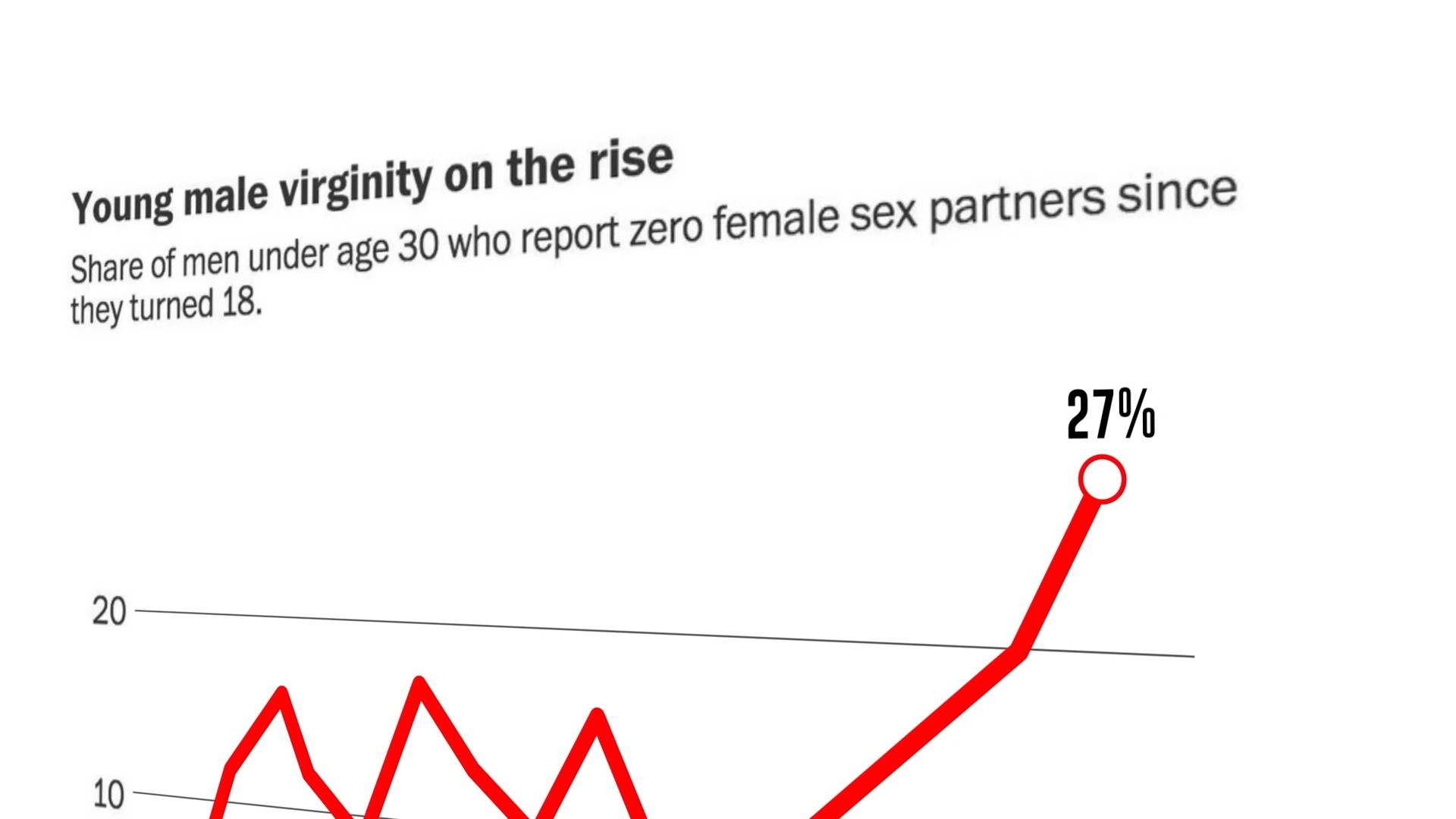
The looking glass self theory, developed by sociologist Charles Cooley, suggests that individuals’ self-concept is influenced by how they believe others perceive them. This theory, along with other sociological concepts, has been applied to various studies on gender and masculinity.
Research has shown that male testosterone levels increase when men are physically and socially dominant, and perceptions of masculinity are often tied to these behaviors. Cooley’s theory highlights the impact of social interaction on the formation of the self, which raises questions about the societal expectations and pressures placed on individuals, especially in regards to gender roles and identity. Overall, the looking glass self can offer valuable insights into how individuals’ perceptions shape their understanding of themselves and how they navigate societal expectations and pressures.
The Role of Technology and Automation
Impact of technology on physical activity
The impact of technology on physical activity has become a growing concern, especially with the sedentary lifestyle that has developed as a result of increased screen time. Nowadays, more and more people spend a significant amount of time in front of screens, whether it’s on computers, smartphones, or television. This excessive screen time has led to a decrease in physical activity, as individuals become more engrossed in the digital world rather than engaging in physical movements and exercises.

Furthermore, the automation of manual labor jobs is another aspect of technology that has contributed to reduced physical activity levels. With the advancement of technology, many jobs that previously required physical exertion have been replaced by machines and automated systems. Industries such as manufacturing, agriculture, and even retail have embraced automation, eliminating the need for physical labor. While this has undoubtedly led to increased efficiency and productivity, it has also resulted in fewer opportunities for people to engage in physically demanding work, further contributing to a sedentary lifestyle.
The impact of technology on physical activity, such as sedentary lifestyle and decreased physical movement, can have an indirect effect on male testosterone levels.
On the other hand, a sedentary lifestyle and decreased physical activity can lead to weight gain and obesity. Obesity has been associated with lower testosterone levels in men. Excessive body fat can convert testosterone into estrogen, leading to a decrease in testosterone production.
Moreover, the psychological effects of technology, such as decreased motivation for physical activity and increased reliance on technology for daily tasks, can also contribute to lower testosterone levels. Lack of motivation and dependence on technology may result in reduced physical activity levels, which can negatively impact testosterone production.

Debunking the Myth: Are Men Really Getting Weaker?
Examining the evidence
Are men really getting weaker? To explore this myth, it is important to examine the evidence surrounding male strength and physical fitness. Numerous research studies have been conducted over the years to analyze the trends in male strength and physical capabilities. These studies provide valuable insights into whether there has been a decline in male strength or if it is just a misconception. By delving into the findings of these research studies, we can gain a comprehensive understanding of the truth behind this widely debated topic.
Comparisons between different generations of men have been a key focus of research when investigating the alleged decline in male strength. These comparisons allow scientists to gauge any noticeable changes in physical prowess over time. By studying various factors, such as muscle mass, grip strength, and endurance levels, researchers have been able to determine if there has been a tangible weakening in men’s physical capacities. The analysis of these generational differences in male strength can help debunk or reinforce the myth surrounding men’s declining physical capabilities. By examining the evidence across multiple generations, we can draw more accurate conclusions and dispel any misconceptions.
Overall, the evidence suggests that men are not necessarily getting weaker. While some studies have shown a decline in certain physical capabilities, this is not a universal trend. There are many factors that can contribute to the strength and physical fitness of men, such as diet, exercise, and lifestyle. Therefore, it is important to take a holistic approach when examining male strength and physical fitness. Focusing on overall health and well-being, encouraging regular exercise and physical activity, and promoting a balanced diet and proper nutrition are all key components to improving male strength and physical capabilities.
The importance of a holistic approach
This encompasses the idea that all aspects of a person’s well-being are interconnected and must be addressed in order to achieve optimal health. This includes not only physical health, but also mental, emotional, and spiritual well-being. Taking a holistic approach means recognizing that these different aspects are not separate entities, but rather influence and impact one another. For example, physical health is often linked to mental well-being, as exercise and nutrition can have a positive effect on mood and overall mental state. Likewise, emotional health can also impact physical well-being, as high levels of stress or unresolved emotional issues can manifest as physical symptoms. By adopting a holistic approach, individuals can better understand and address the various factors that contribute to their overall health, leading to a more balanced and fulfilling life. This may involve incorporating practices such as regular exercise, healthy eating, relaxation techniques, therapy, or spiritual practices into one’s routine. Ultimately, the goal of a holistic approach is to promote overall well-being by treating the person as a whole, rather than focusing solely on the symptoms or ailments they may be experiencing.

Final Thoughts
While there may be some factors that contribute to the perception of men getting weaker, it is important to consider the multifaceted nature of this issue. Lifestyle changes, societal expectations, and physiological factors all play a role in determining male strength. By addressing these factors and promoting a holistic approach to health, we can help men maintain their physical strength and overall well-being.
2 Comments
Leave A Comment

In recent years, there has been a growing concern about the physical strength and overall health of men. Many argue that men today are becoming weaker compared to previous generations. This blog post aims to explore this claim and examine the factors that may contribute to the perceived decline in male strength.
By analyzing various aspects such as lifestyle changes, societal expectations, and physiological factors, we can gain a better understanding of whether men are truly getting weaker or if there are other factors at play.

What’s The Problem Anyways?
Take any high school class photo of 1980 and compare it to a class photo taken in 2020; you can see the difference yourself, in 1980 you’ll see men, in 2020, you will see boys.

Researchers have found that the average male sperm count has plummeted by 50% since the 1970s. Erectile dysfunction, social anxiety, low confidence, fear of talking to women, obesity, low sperm count, difficulty building muscle, depression and lack of motivation.

These are all problems modern men are facing more than any generation ever before; they are all associated with lower testosterone levels.
To take away a man’s testosterone is to take away everything that makes him a man and yet that is what modern society is systematically doing to you right now.
Moreover, it is not solely testosterone that is affected. From 1973 to 2011, there was a significant decline of 59% in male sperm count. We currently have less than half the sperm count compared to 50 years ago, and according to forecasts, sperm count will plummet to zero by 2045.

What’s Testosterone?
Testosterone is a hormone that is mainly produced in the testicles and is responsible for the development of male sexual characteristics. It plays a crucial role in various aspects of men’s health, including the development of muscle mass and strength, bone density, sperm production, and even mood regulation. Testosterone levels typically peak during adolescence and early adulthood and then gradually decline with age.
Testosterone is important for men because it has a significant impact on their overall well-being and quality of life. It helps maintain muscle mass and bone density, which are essential for physical strength and mobility. Testosterone also plays a role in regulating mood, energy levels, and cognitive function.
Low testosterone levels can lead to various health issues, such as decreased muscle mass, increased body fat, decreased libido, erectile dysfunction, and reduced sperm production. It can also contribute to mental health problems, including depression and fatigue.
The major mental effect of testosterone is it makes effort feel good
It’s worth noting that testosterone levels can be influenced by various factors, including lifestyle choices, such as sedentary behavior, poor diet, stress, and lack of sleep.
But in this article, we will dive into deeper factors that are negatively affecting the testosterone levels for men.

Drop in testosterone between 1950 and 2020
Factors Influencing Male Strength
Male Feminization
In his book, Anthony G. Jay explores the concept of male estrogenization and how it can potentially feminize men. He highlights the impact of estrogen-like compounds, known as estrogenic on male hormone balance.
Estrogenic chemicals can be found in various everyday products, such as plastics, personal care products, and even certain foods. These compounds can mimic the effects of estrogen in the body and disrupt the delicate balance of hormones, including testosterone.

One example of a scientific study that demonstrates the effects of estrogen on male fish is the research conducted by Canadian researchers. In this study, estrogen was added to the water where male fish were living. The researchers observed that the male fish started exhibiting female characteristics, such as the production of eggs. This study highlights the potential impact of estrogenic compounds on the hormonal balance and reproductive system of male organisms.

It’s important to note that while these studies provide valuable insights into the effects of estrogenic compounds, the direct translation of these findings to human males may not be straightforward. Human physiology and the effects of compounds can differ significantly from those of fish. However, they do shed light on the potential influence of estrogenic compounds on hormone balance in males.

Soy Nation
Soy contains compounds called phytoestrogens, which are plant-based substances that mimic the effects of estrogen in the body. These phytoestrogens can bind to estrogen receptors and potentially impact hormone balance in both males and females.
Some research suggests that consuming soy products, which are rich in phytoestrogens, may have an estrogenic effect on the body.
While soy consumption has been associated with certain health benefits, such as reducing the risk of heart disease and improving bone health, there are concerns about its potential impact on hormone levels, particularly in men. Some studies have suggested that high levels of soy consumption may lead to decreased testosterone levels in men.

Estrogen is to females what testosterone is to males.
But when estrogen levels are too high in men, it can lead to infertility, low testosterone, slow growth, shrinking muscle mass and weight gain.
And soy happens to have estrogen than any other bean in existence.
1 cup of soybean has the equivalent amount of estrogen of 20,000 cups of chickpeas. Which makes soy the perfect food for farmers to fatten up their cows.

Water Supply
In addition to the potential impact of soy consumption, there are other environmental factors that can contribute to lower testosterone levels in men. The quality of the water supply is one such factor.
Many chemicals that are used in industry and agriculture can leach into water supplies, including endocrine-disrupting chemicals such as bisphenol A (BPA). Studies have shown that exposure to BPA and other endocrine-disrupting chemicals can disrupt the balance of hormones in males, leading to lower testosterone levels and other adverse health effects.

It was found that male fish that swim in water that contain low levels of artificial estrogens from birth control ended up developing feminine traits. These male fish literally started to produce eggs in their testicles, and these horrifying changes in their hormones were passed down through the generations.
And yes, this is the same water that you bathe in that comes in contact and gets absorbed by your skin. Not to mention the microplastics in your water, the lead in your water, waterborne bacteria and forever chemicals such as fluoride and more.
Alex Jones was once screaming: “I don’t want a bunch of chemicals in my water that turn the freaking frogs gay!”

The study he was referring to regarding frogs and atrazine was conducted by researchers at the University of California, Berkeley. The study explored the effects of atrazine, a commonly used herbicide, on the development of amphibians.
The researchers found that exposure to atrazine caused hormonal disruptions in frogs, leading to changes in their reproductive organs and behaviors. Specifically, they observed that male frogs exposed to atrazine exhibited feminized characteristics, such as reduced testosterone levels and the development of female reproductive tissues. This led to a decrease in their ability to reproduce successfully.

It is important to ensure that the water you consume is free from chemicals and contaminants that may disrupt hormone balance. While glass-bottled spring water is generally considered safe and can be a good choice, it is not the only option for maintaining normal testosterone levels.

Plastic water bottles, which are often used as a convenient and portable means of quenching our thirst, unfortunately contain a significant amount of Phthalates (which also mimics the effects of estrogen your body). These chemical compounds, commonly added to plastics to make them more flexible and durable, can be found leaching into the water we drink from these bottles. As a result, the consumption of water from plastic bottles contributes to our exposure to Phthalates, which have been linked to potential health hazards in numerous studies and pose a concern for our overall well-being. Therefore, it is crucial to be aware of the presence of Phthalates in plastic water bottles and to explore alternative options in order to minimize our exposure to these harmful substances.
Filtered water, such as water filtered through activated carbon or reverse osmosis, can also be a suitable choice. These filtration methods help remove impurities, including potential endocrine-disrupting chemicals, from the water.
It is important to note that water quality can vary depending on your location. If you have concerns about the quality of your tap water, you may consider using a water filter or contacting your local water supplier for more information.
In summary, while glass-bottled spring water can be a safe choice, there are other options such as filtered water that can also help maintain normal testosterone levels. It is important to consider the water source and quality to minimize exposure to potential hormone-disrupting chemicals.

Lifestyle Changes
The rise of consumerism and a materialistic and capitalist society has had significant effects on the human psyche, particularly among males. An influx of advertisements and marketing campaigns have been created to target male testosterone and masculinity, pushing individuals towards purchasing the latest and greatest products in order to showcase their status. This results in a culture of instant gratification, where the pursuit of material goods is seen as a way to validate oneself. However, this culture has also led to negative health effects such as obesity, as many individuals seek comfort in food or drink as a means of coping with the pressures of consumerism.
These lifestyle changes can indeed have a negative impact on modern men’s testosterone levels. Here’s how each of these factors can affect testosterone levels:
1. Sedentary jobs and decreased physical activity: A sedentary lifestyle and lack of exercise can lead to lower testosterone levels. Regular physical activity helps to stimulate the production of testosterone in the body. When men engage in less physical activity, their testosterone production may decrease.

2. Poor dietary habits and lack of proper nutrition: A diet lacking in essential nutrients can contribute to lower testosterone levels. Certain nutrients such as zinc, vitamin D, and magnesium are crucial for testosterone production. If a man’s diet is deficient in these nutrients, it can negatively impact his testosterone levels.

3. Increased stress levels: Chronic stress can disrupt hormone balance in the body, including testosterone. When the body is under stress, it releases cortisol, a hormone that can inhibit testosterone production. High levels of cortisol can lead to lower testosterone levels over time.

4. Lack of sleep: Sleep deprivation can also have a negative impact on testosterone levels. Testosterone production occurs primarily during sleep, especially during REM sleep. When men consistently experience inadequate sleep, it can lead to lower testosterone levels.

Societal Expectations
In our rapidly evolving society, we are witnessing a significant shift in traditional gender roles and the expectations that accompany them. Over the past few decades, the boundaries and limitations that once defined the roles assigned to men and women have become increasingly blurred. With the advancements in education, technology, and equal opportunity, individuals are now afforded the freedom to challenge and redefine these societal norms. This ongoing transformation has paved the way for greater inclusivity and a more diverse understanding of gender identity and expression. As a result, the concept of masculinity and femininity is no longer confined to rigid stereotypes, but rather seen as fluid and malleable constructs that can vary from person to person. This paradigm shift has opened up a world of possibilities, allowing individuals to pursue their passions and interests regardless of societal expectations based solely on their gender. As we continue to navigate these changing gender roles and expectations, it is important to foster an environment of acceptance, understanding, and respect for all individuals, regardless of how they choose to identify and express themselves.

In recent years, it has become increasingly evident that society’s gender roles and expectations have undergone a significant transformation. As a result, men now find themselves grappling with the mounting pressure to conform to a particular set of body standards that are not only unattainable but also impose unrealistic and arbitrary ideals upon them. This cultural shift has fostered an environment where men are expected to possess an impeccably chiseled physique, a prominent jawline, muscular arms, and six-pack abs. However, it is essential to recognize that these expectations often disregard the individual’s unique genetic makeup, overall health, and personal circumstances, ultimately contributing to detrimental consequences on men’s mental, emotional, and physical well-being. This evolving landscape necessitates a thoughtful examination of the outdated and harmful notions surrounding masculinity and body image, as well as the need to challenge and redefine societal expectations to foster a healthier and more inclusive environment for all individuals.

In addition to the aforementioned challenges, it is important to acknowledge that mental health issues continue to be subject to persistent stigmatization, especially when it pertains to men’s mental health. This pervasive societal stigma surrounding mental health creates an atmosphere where men may find it arduous to reach out for the assistance they desperately require. Consequently, the prevailing negative perceptions and societal pressures hinder their ability to openly express their feelings and seek support during times of need.
At a societal level, it’s being thrown down men’s throats; like in high-fashion how women’s dresses are becoming acceptable for men; toxic masculinity is what men hear when being a man in any sort of capacity was just considered as a negative. It’s simple if you think about it, if you condition a man to believe that it’s bad to act like a man, it’s going to have an impact when you constantly toxic shame men and tell that the way they are acting is toxic, eventually, you will wear them down.
You can look at how most famous male celebrities dress nowadays and this tend to have an impact on the younger generation of men.
Not to act like a conspiracy theorist but if you think about it for yourself, a population of weak men is easier to control, what’s happening on a societal level is not a coincidence, it’s on purpose. If you can feminize a whole population, any chance of revolt or uprising slim to none.

The looking glass self theory, developed by sociologist Charles Cooley, suggests that individuals’ self-concept is influenced by how they believe others perceive them. This theory, along with other sociological concepts, has been applied to various studies on gender and masculinity.
Research has shown that male testosterone levels increase when men are physically and socially dominant, and perceptions of masculinity are often tied to these behaviors. Cooley’s theory highlights the impact of social interaction on the formation of the self, which raises questions about the societal expectations and pressures placed on individuals, especially in regards to gender roles and identity. Overall, the looking glass self can offer valuable insights into how individuals’ perceptions shape their understanding of themselves and how they navigate societal expectations and pressures.
The Role of Technology and Automation
Impact of technology on physical activity
The impact of technology on physical activity has become a growing concern, especially with the sedentary lifestyle that has developed as a result of increased screen time. Nowadays, more and more people spend a significant amount of time in front of screens, whether it’s on computers, smartphones, or television. This excessive screen time has led to a decrease in physical activity, as individuals become more engrossed in the digital world rather than engaging in physical movements and exercises.

Furthermore, the automation of manual labor jobs is another aspect of technology that has contributed to reduced physical activity levels. With the advancement of technology, many jobs that previously required physical exertion have been replaced by machines and automated systems. Industries such as manufacturing, agriculture, and even retail have embraced automation, eliminating the need for physical labor. While this has undoubtedly led to increased efficiency and productivity, it has also resulted in fewer opportunities for people to engage in physically demanding work, further contributing to a sedentary lifestyle.
The impact of technology on physical activity, such as sedentary lifestyle and decreased physical movement, can have an indirect effect on male testosterone levels.
On the other hand, a sedentary lifestyle and decreased physical activity can lead to weight gain and obesity. Obesity has been associated with lower testosterone levels in men. Excessive body fat can convert testosterone into estrogen, leading to a decrease in testosterone production.
Moreover, the psychological effects of technology, such as decreased motivation for physical activity and increased reliance on technology for daily tasks, can also contribute to lower testosterone levels. Lack of motivation and dependence on technology may result in reduced physical activity levels, which can negatively impact testosterone production.

Debunking the Myth: Are Men Really Getting Weaker?
Examining the evidence
Are men really getting weaker? To explore this myth, it is important to examine the evidence surrounding male strength and physical fitness. Numerous research studies have been conducted over the years to analyze the trends in male strength and physical capabilities. These studies provide valuable insights into whether there has been a decline in male strength or if it is just a misconception. By delving into the findings of these research studies, we can gain a comprehensive understanding of the truth behind this widely debated topic.
Comparisons between different generations of men have been a key focus of research when investigating the alleged decline in male strength. These comparisons allow scientists to gauge any noticeable changes in physical prowess over time. By studying various factors, such as muscle mass, grip strength, and endurance levels, researchers have been able to determine if there has been a tangible weakening in men’s physical capacities. The analysis of these generational differences in male strength can help debunk or reinforce the myth surrounding men’s declining physical capabilities. By examining the evidence across multiple generations, we can draw more accurate conclusions and dispel any misconceptions.
Overall, the evidence suggests that men are not necessarily getting weaker. While some studies have shown a decline in certain physical capabilities, this is not a universal trend. There are many factors that can contribute to the strength and physical fitness of men, such as diet, exercise, and lifestyle. Therefore, it is important to take a holistic approach when examining male strength and physical fitness. Focusing on overall health and well-being, encouraging regular exercise and physical activity, and promoting a balanced diet and proper nutrition are all key components to improving male strength and physical capabilities.
The importance of a holistic approach
This encompasses the idea that all aspects of a person’s well-being are interconnected and must be addressed in order to achieve optimal health. This includes not only physical health, but also mental, emotional, and spiritual well-being. Taking a holistic approach means recognizing that these different aspects are not separate entities, but rather influence and impact one another. For example, physical health is often linked to mental well-being, as exercise and nutrition can have a positive effect on mood and overall mental state. Likewise, emotional health can also impact physical well-being, as high levels of stress or unresolved emotional issues can manifest as physical symptoms. By adopting a holistic approach, individuals can better understand and address the various factors that contribute to their overall health, leading to a more balanced and fulfilling life. This may involve incorporating practices such as regular exercise, healthy eating, relaxation techniques, therapy, or spiritual practices into one’s routine. Ultimately, the goal of a holistic approach is to promote overall well-being by treating the person as a whole, rather than focusing solely on the symptoms or ailments they may be experiencing.

Final Thoughts
While there may be some factors that contribute to the perception of men getting weaker, it is important to consider the multifaceted nature of this issue. Lifestyle changes, societal expectations, and physiological factors all play a role in determining male strength. By addressing these factors and promoting a holistic approach to health, we can help men maintain their physical strength and overall well-being.
2 Comments
-
Thank you for these information

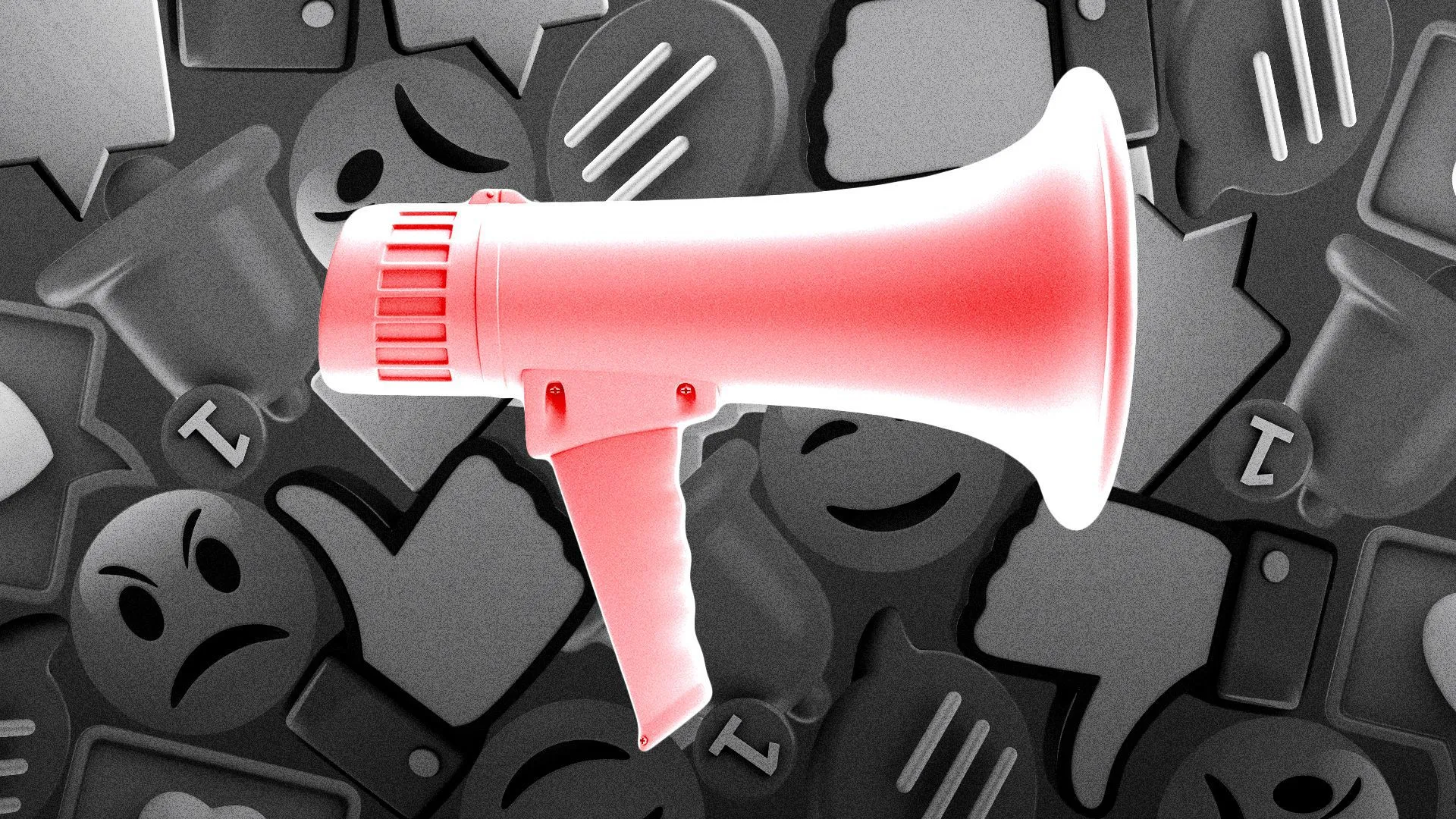


Thank you for these information
Thank you for taking the time to read it Marc!